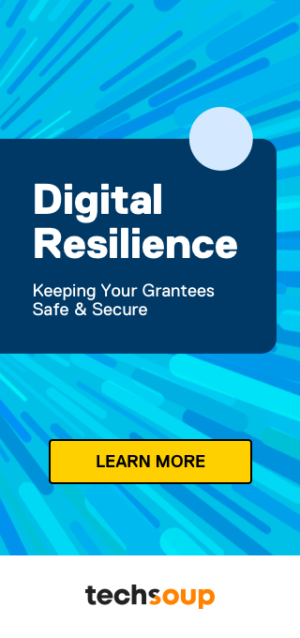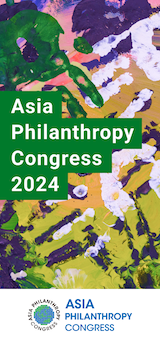Women’s and girls’ organizations received $8.8 billion in philanthropic support in 2020, which is 1.8 percent of total charitable giving – a key finding from the 2023 Women and Girls Index (WGI)*. A somewhat larger figure of 1.9 percent has been quoted by many outraged advocates, but one-tenth of a minuscule percent is still minuscule. And that’s just in the U.S..
Globally, women are finding their voices. Their needs are vast and growing. Yet, perennial funding inadequacy for women and girls remains a grievous roadblock to gender equity. Its causes are both predictable and preventable.
Money Pyramid
International assistance engages an astonishing array of banks, government institutions, corporations, academic institutions, International Non-Governmental Organizations (INGOs), community-based organizations (CBOs), and nonprofits. The alliances have their troubles.
Despite internal and external challenges, the colonial mindset of top players still has not dissipated.
USAID, US embassies, the World Bank, the IMF, major foundations like Ford and Rockefeller, and multi-national corporations all exert powerful influence on governance where they have a presence. Despite years of talk about ‘empowerment,’ the interrelated needs of women, particularly those in conflict areas and slums, remain invisible and critically underfunded. Local organizations hold the front line in the face of exponentially increasing demands.
Mid-pyramid is INGO turf. The couple of dozen or so ‘usual suspects’ are perennial recipients of major government contracts, in some cases despite questionable practices. For the last few years, the ‘localization’ of assistance has been batted about, but ultimately funding alliances fall along class lines. Rich funders prefer rich INGOs. But, as one philanthropy activist put it, if an INGO is still working in a country after 20 years, it has not done the essential job of equipping local people to run the show. Economic colonialism thrives during disasters.
Those fretting about localization could localize their funding streams if they actually wanted to help build the capacity of less-technologically and financially sophisticated CBOs. When fully funded, those organizations could accomplish a lot more for a lot less. They are invested fully in the outcomes. Time and again, particularly during crises, they are marginalized by funders whose expenditures on meetings and reports could easily sustain a major health education and screening program for women in any developing country.
Bottom tier players are women’s foundations and funding networks. In my experience, their decision makers tend toward inaccessibility when personal connections would be hugely informative and beneficial. Their distributed funds to women’s programs total in the low millions of dollars. International humanitarian allocations tend to be in the billions.
Many organizations champion women’s entrepreneurship programs, possibly a ‘flavor of the year’, but this single focus ignores the often-debilitating complex of burdens women carry. In addition to unequal pay, their top concerns are racial injustice, gender-based violence, inadequate health care, threats to reproductive rights, lack of education, food insecurity, climate change, unequal political representation, and discriminatory social institutions. Any one of them can derail a woman lacking integrated support. None of them should be major determinants of women’s lives in the twenty-first century.
The most workable solution for most women stranded in resource-deprived environments is to gather them in a safe place and help them learn how to advance their life options cooperatively. For millennia, the group dynamic has been the wellspring of women’s successes. It must be a foundational element of any program designed to foster women’s advancement.
How Long Will This Keep Going On?
The more complexity embedded in the wealth distribution process, the less likely significant improvements will happen for women anytime soon. The solutions are accessible, pretty straight forward, and already encoded in buzzwords.
- No program or organization is sustainable without access to capital. It’s the funders’ job to reliably steward the transfer of wealth to women. Informed and generous investment in women’s cooperatively managed businesses enable them, in time, to become self-supporting.
- The practice of capping overhead or administrative costs at unreasonably low levels is pernicious. Women managers need a place to work and salaries to support their families.. They need internet access, computers, printers, office supplies – all the things their prospective benefactors already have. Non-response or months-long response time to proposals are practices that deny the urgency and changeable realities of service provision. Courtesy is never wasted on grant seekers.
- Nothing is new under the sun in programming. Grace notes can always be added, but the purpose of any effective program is to enable women to see their worth and use their gifts for achieving prosperous and contributory lives. What can be innovative is the team assembled to convert ideas and money to positive impact on lives. Unexpected wonders dwell in every competent, committed implementer and is best experienced through personal interactions.
According to the World Bank, ‘Women are one-half of the world’s population but only contribute 37 percent of the global GDP’ (of little relevance to most people’s lives). ‘An economy cannot operate at its full potential if half of its population cannot fully contribute to it.’ Elevating women is a twofer because as a mother goes, so go her children. We have a LOT of institutional and social discrimination to redress. The impact of dithering is profoundly unfavorable to humankind.
The philanthropic industry can be as slow to change as a tanker ship is to turn. Or at least a few of its progressive members can be nimble. Women’s CBOs can deliver dependable, transformative assistance in their own communities. Supporting them is how that 1.8 percent is elevated for good.
Susan Burgess-Lent is the founder of Women’s Centers International (WCI)l, a US-based nonprofit.
______________________
* Women and Girls Index (WGI). https://wgi.communityplatform.us/ The WGI tracks the landscape of women’s and girls’ organizations in the U.S., including the amount of philanthropic support they receive from individuals, foundations, and corporations.






Comments (0)